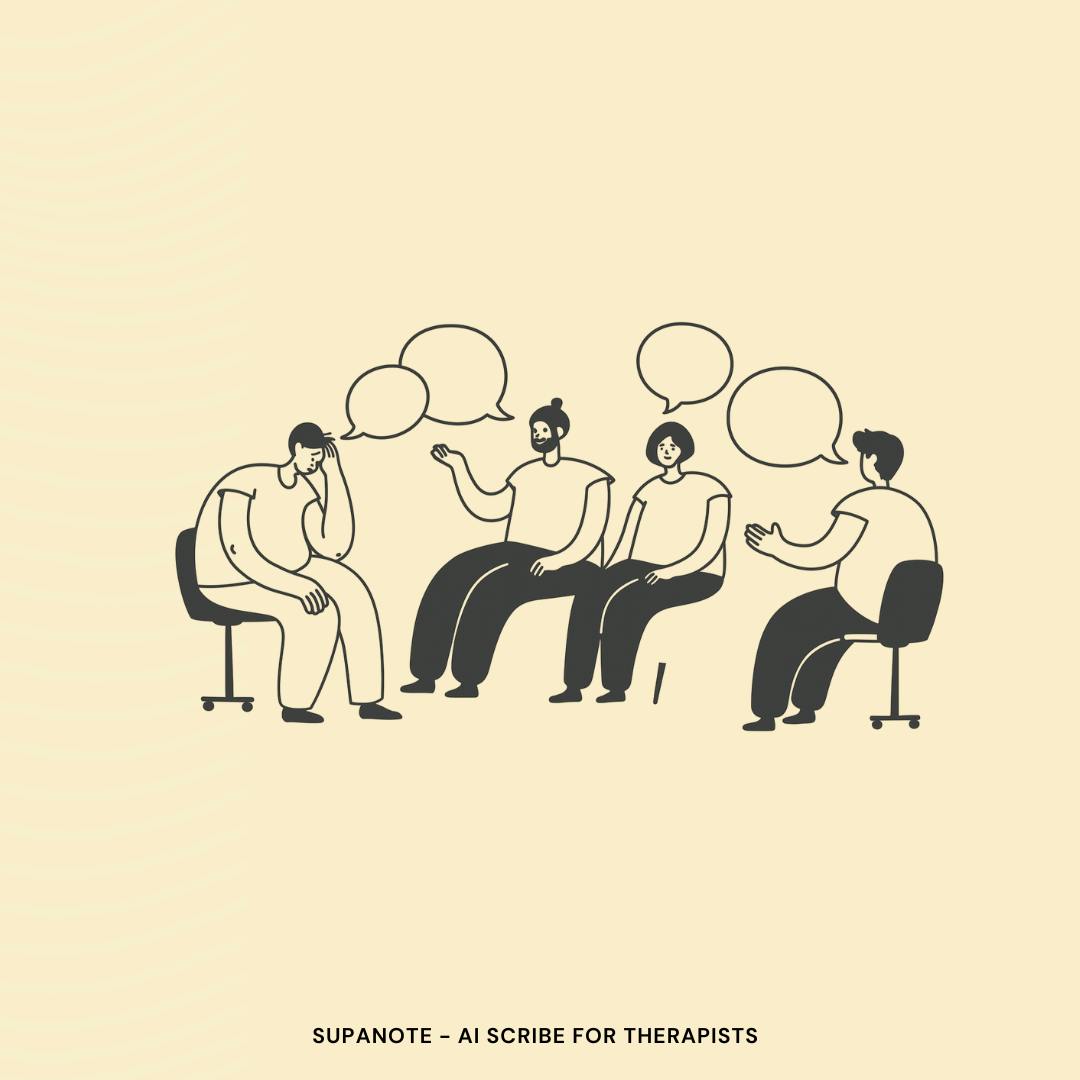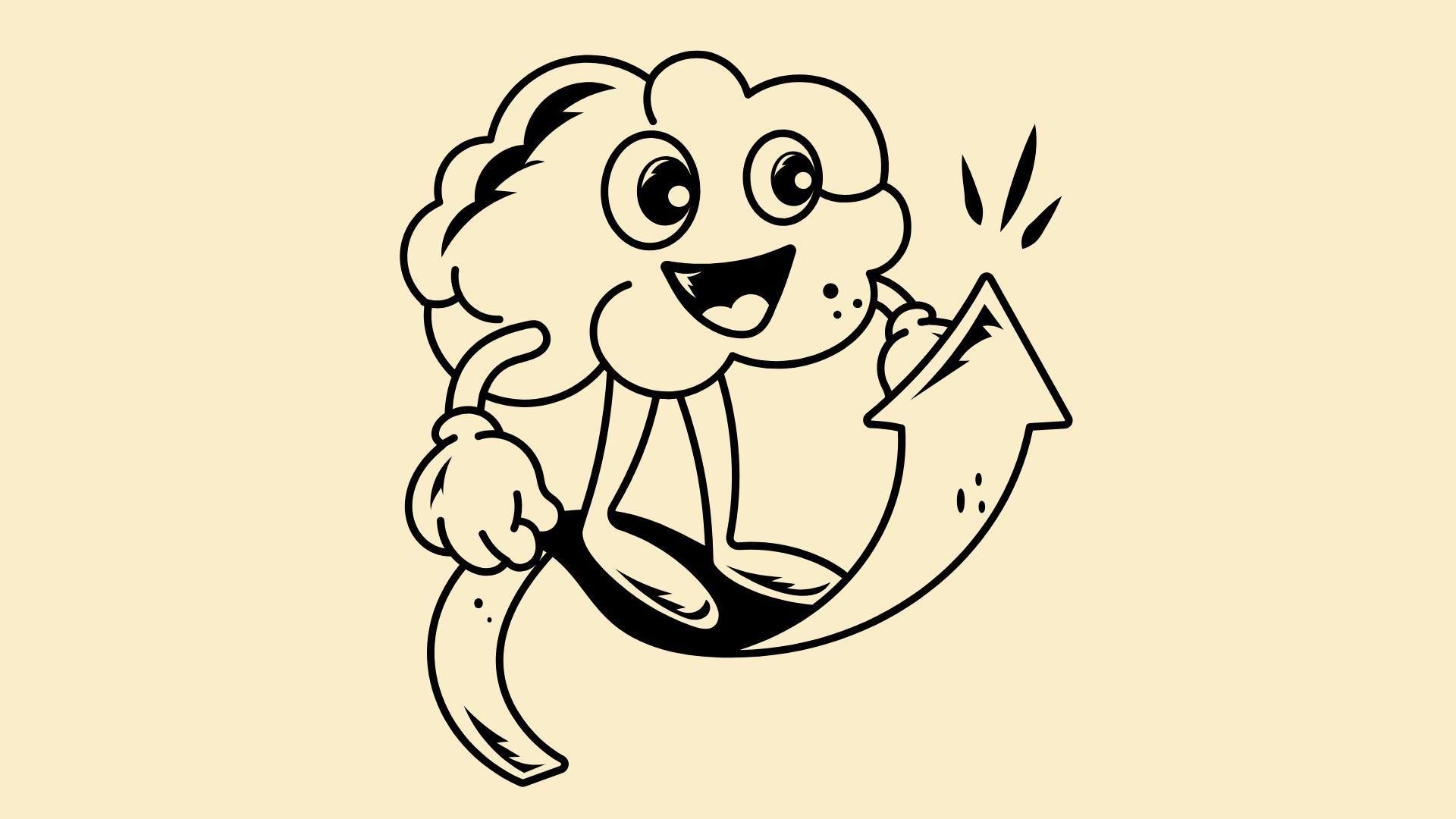Your client sits across from you, confused and frustrated. They ask "What's happening to me?". Their family calls constantly. They don't understand the diagnosis. Last week, they stopped taking their prescribed medication.
This is exactly why psychoeducation exists.
But what is psychoeducation exactly? And how do you use it effectively in your practice?

What Is Psychoeducation?
Psychoeducation is a basic psychotherapeutic intervention. It involves teaching clients about their mental illness. You explain symptoms, causes, and treatment options. You also teach coping skills and problem-solving strategies.
This isn't just handing out pamphlets. Real psychoeducation is interactive. It's personalized. It happens throughout treatment, not just once.
The goal here is simple:
- Help clients understand their mental health condition.
- Give them tools to manage it.
- Make them partners in their psychological treatment.
Why Psychoeducation Matters?
Research shows psychoeducation works. It improves treatment adherence by 60%. It cuts crisis calls in half. It reduces relapse rates for serious mental illness.
Mental health professionals who use psychoeducation interventions see better treatment outcomes. Clients stay in therapy longer. They use coping skills more effectively. They need fewer emergency mental health services.
Benefits for you as a therapist:
- Less time managing crises.
- More time doing actual therapy.
- Better client relationships.
- Improved job satisfaction.
Benefits for your clients:
- Less confusion about their psychiatric disorder.
- Better family relationships.
- More control over their mental wellness.
The Four Core Components of Effective Psychoeducation
1. Information About Their Mental Health Condition
Start with the basics. What is their psychiatric disorder?
How does it show up in daily life? What causes it?
Use simple language. Skip the DSM criteria. Focus on what matters to them right now.
- For depression: "Your brain chemistry is off. That's why simple tasks feel impossible."
- For anxiety disorders: "Your alarm system is stuck on high. That's why normal situations feel dangerous."
- For bipolar disorder: "Your mood regulation system has ups and downs. We can help you recognize the patterns."
2. Coping Strategies and Skills Training
Teach specific techniques they can use immediately. Not general wellness tips. Actual skills for real situations.
Examples:
- Breathing exercises for panic attacks
- Grounding techniques for dissociation
- Sleep hygiene for mood disorders
- Distraction methods for self-harm urges
Practice these in session. Role-play different scenarios. Make sure they can actually do the techniques.
3. Communication Skills Development
Help clients explain their mental illness to others. Family members need to understand.
Employers might need basic information. Friends want to help but don't know how.
Teach them to say:
- "I have a medical condition that affects my mood."
- "Sometimes I need to take breaks when symptoms flare up."
- "Here's how you can help me during difficult times."
4. Problem-Solving for Real-World Situations
Work through actual scenarios they'll face.
Like - What happens when depression hits at work? How do they handle family criticism?
What's their plan when anxiety strikes in social situations?
Create specific action plans. Write them down.
Practice the responses. Update plans as treatment progresses.
Psychoeducation for Specific Mental Health Conditions
Major Depression
Start by explaining depression as a medical condition. Not a character flaw or weakness. The brain chemistry explanation reduces shame immediately.
Key concepts to cover:
- Depressive symptoms are real medical symptoms
- Recovery takes time and isn't linear
- Medication and therapy both change brain chemistry
- Small actions matter more than big motivation
Essential coping strategies:
- Daily routine scheduling
- Activity monitoring and planning
- Energy management techniques
- Early warning signs recognition
Anxiety Disorders
Focus on the biology of anxiety first.
Explain the fight-or-flight response. Help them understand why their body reacts so strongly.
Important points:
- Anxiety is a normal emotion that's become overactive
- Avoidance makes anxiety worse over time
- Exposure therapy works by retraining the brain
- Physical symptoms are real but not dangerous
Practical tools for managing anxiety:
- Progressive muscle relaxation techniques
- Cognitive restructuring for worry thoughts
- Gradual exposure planning
- Panic attack action plans
Bipolar Disorder
Education is crucial for bipolar patients. They need to become experts on their own patterns. Most don't recognize early warning signs until crisis hits.
Critical education areas:
- Mood episode phases and warning signs
- The importance of medication compliance
- Sleep schedule impact on mood stability
- Building support systems before crisis
Key skills:
- Daily mood tracking
- Sleep hygiene protocols
- Stress management techniques
- Crisis planning and prevention
Substance Abuse and Addiction
Challenge the shame narrative immediately. Addiction is a brain disease, not a moral failing. This reframe is essential for treatment engagement.
Core concepts:
- How addiction changes brain chemistry
- The cycle of craving, use, and consequences
- Relapse as part of recovery, not failure
- The role of triggers and environmental factors
Essential skills:
- Trigger identification and avoidance planning
- Urge surfing and distress tolerance
- Healthy coping alternatives
- Support system building
Obsessive Compulsive Disorder
Start by normalizing intrusive thoughts. Everyone has weird thoughts. Their brain just takes them too seriously.
Key education points:
- Intrusive thoughts are normal and don't define them
- Compulsions temporarily reduce anxiety but strengthen obsessions
- Exposure and response prevention retrains the brain
- Recovery means accepting uncertainty
Borderline Personality Disorder
Focus on emotional regulation skills first. These clients need immediate tools for emotional storms before deeper work begins.
Priority skills:
- Distress tolerance techniques
- Interpersonal effectiveness strategies
- Emotion regulation skills
- Crisis survival methods
Family Psychoeducation: Essential for Success
Family members can make or break treatment outcomes. Especially for serious mental illness.
Educated families become your treatment allies. Confused families create additional stress.
What families need to understand:
- How the psychiatric disorder affects daily functioning
- What helps versus what makes symptoms worse
- Early warning signs to watch for
- How to support without enabling
- The importance of their own self-care
Research shows family psychoeducation reduces hospitalization by 40%.
It cuts relapse rates in half for patients with schizophrenia and other severe mental illnesses.
Family education reduces:
- Expressed emotion and criticism
- Family burden and stress
- Conflict in the home environment
- Isolation and stigma
Group Psychoeducation: Reaching More People Effectively
Group therapy formats work especially well for psychoeducation interventions.
Clients learn from each other while you reach more people efficiently.
Benefits of group psychoeducation:
- Peer support and shared experiences
- Reduced isolation and stigma
- Cost-effective delivery of mental health services
- Enhanced motivation through group dynamics
The intervention group format works particularly well for family members learning about their child's mental health or a loved one's psychiatric disorder.
Types of psychoeducation groups:
- Diagnosis-specific groups (depression, anxiety, bipolar)
- Skills-focused groups (coping strategies, communication)
- Family education groups
- Mixed groups for common issues
How to Deliver Psychoeducation Effectively
Make It Interactive
Don't lecture. Start conversations.
Ask what they already know about their mental health condition. Build on their existing understanding.
Use the Socratic method. Ask questions that lead them to insights. This creates buy-in and better retention.
Use Multiple Learning Formats
People learn differently.
Some need handouts they can reference later. Others prefer verbal explanations with visual aids.
Many need hands-on practice.
Delivery methods:
- Verbal explanations with discussion
- Written materials and handouts
- Visual aids, charts, and diagrams
- Interactive exercises and role-plays
- Online resources and apps
Time Your Education Carefully
Don't try to educate someone in crisis.
Stabilize first, educate second. Spread information across multiple therapy sessions instead of overwhelming them.
What is a good timing for that?
- After initial crisis stabilization
- When they ask direct questions
- Before starting new interventions
- When reviewing progress and setbacks
Check Understanding Regularly
Have them explain concepts back to you in their own words. If they can't, you haven't taught it effectively yet.
Ask specific questions: "What would you tell a friend who has the same symptoms?" "How would you handle this situation at home?"
Common Mistakes That Undermine Effectiveness of Psychoeducation
Information Overload
- Don't dump everything about their mental health condition at once.
- Start with immediate needs. Build understanding gradually.
- Break complex information into digestible pieces. Focus on what they need to function today.
Generic, One-Size-Fits-All Approaches
- A 25-year-old college student with panic attacks needs different information than a 50-year-old executive with the same anxiety disorders.
- Tailor everything to their specific situation, culture, age, and life circumstances.
Poor Timing and Pacing
- Don't try to educate during emotional dysregulation.
- They won't process or remember information about their mental illness.
- Wait for stable moments. Spread education across multiple sessions.
Ignoring Emotional Reactions
- When clients learn their diagnosis, they often feel scared, overwhelmed, or angry initially. This is completely normal.
- Address emotions directly. Provide reassurance about treatment options.
- Help them balance information with hope and support.
Focusing Only on Problems
- Don't just explain what's wrong.
- Emphasize their strengths and capabilities.
- Show how understanding gives them more control, not less.
Building Your Psychoeducation Toolkit
Create resources you can use repeatedly for different mental health conditions.
Having materials ready makes delivery more efficient and consistent.
Essential materials to develop:
- One-page fact sheets for common psychiatric disorders
- Symptom tracking worksheets
- Coping strategy reference cards
- Family education handouts
- Crisis planning templates
- Local support groups contact lists
Guidelines for creating materials:
- Use simple, jargon-free language
- Include visual elements when helpful
- Make information actionable and specific
- Customize for your client population
- Update regularly based on new research
Integrating Psychoeducation Into Your Practice
Weave it into existing interventions and make it ongoing, not one-time
- Real psychoeducation happens continuously throughout psychological treatment.
- Check understanding periodically about treatment options and coping strategies.
- Don't create separate "education sessions." Integrate learning into regular therapy sessions.
- When processing a panic attack, explain the physiology.
- When reviewing homework, reinforce concepts about their mental health condition.
- When planning goals, teach the reasoning behind interventions.
- Correct misconceptions quickly about mental illness and prescribed medication.
- This ongoing approach to perform psychoeducation interventions improves long-term treatment outcomes.
Start Early in Treatment
- Begin psychoeducation in the first few sessions after initial stabilization.
- Early education improves engagement and reduces dropout rates.
- Continue throughout treatment. Deepen understanding as therapy progresses.
Write Down What You Teach
- Write notes about what you taught clients. This helps with insurance. It shows treatment is needed.
- Keep track of what topics you covered. Note if clients understand.
- Include family psychoeducation and group therapy participation.
- Document treatment adherence improvements and relapse prevention progress through systematic review of client responses.
Writing these notes can be really time-taking sometimes. In this cases, tools like Supanote can be a game changer.
It helps you write notes for your sessions and saves so much time. Think of it like a personal AI scribe for writing your session notes.
Ready to Try? 10 notes on us!
Login to your Supanote account and instantly access 10 free notes
Get it Now!
The Business Case for Psychoeducation in Mental Health Services
Better-educated clients have superior treatment outcomes through improved treatment adherence.
They complete psychological treatment more often.
They refer others more frequently. They need fewer emergency mental health services.
Practice benefits from psychoeducational interventions:
- Reduced crisis calls and emergency contacts for mental health conditions
- Higher treatment completion rates for psychiatric disorders
- Better client satisfaction scores across all mental disorders
- More referrals from successful clients with serious mental illness
- Clearer documentation for insurance regarding psychological interventions
Financial impact on mental health professionals:
- Less time managing crises means more time for billable therapy sessions
- Better treatment outcomes lead to positive reputation in mental health services
- Reduced liability from improved client safety and treatment compliance
- Insurance companies favor evidence-based psychotherapeutic interventions
- Systematic reviews show cost-effectiveness of psychoeducation interventions
- Randomized trials demonstrate reduced healthcare costs for severe mental illnesses
Mental health professionals who incorporate psychoeducation see significant reduction in administrative burden.
The control group studies show clear benefits. This basic psychotherapeutic intervention improves both clinical practice guidelines adherence and business outcomes.
Special Considerations for Psychoeducational Interventions
Cultural Sensitivity in Mental Health Services
Adapt psychoeducation to cultural beliefs and values.
Some cultures view mental illness differently. Respect these perspectives while providing accurate information about psychiatric disorders.
Work with cultural liaisons when needed for specific mental health conditions.
Use culturally appropriate examples and metaphors when discussing psychological treatment.
Age-Appropriate Education for Mental Health Conditions
Children need different explanations than adults about their mental health condition. Teenagers require age-relevant examples for managing anxiety and depression.
Older adults may have different concerns about prescribed medication and cognitive changes.
For children: Use simple language and concrete examples. Include play-based learning about their child's mental health.
For adolescents: Address identity and peer concerns. Use technology and interactive methods for psychological interventions.
For older adults: Connect to their life experience. Address concerns about cognition and independence in mental wellness.
Educational Level Considerations for Psychiatric Disorders
This is a superbly important, step. Adjust your language and materials to match client educational backgrounds.
Highly educated clients may want detailed information about their psychological treatment. Others need simple, practical explanations about mental disorders.
Always check understanding regardless of apparent intelligence or education level when discussing treatment adherence and coping strategies.
Frequently Asked Questions
Q. What is psychoeducation?
A. Teaching clients about their mental illness and giving them coping skills. It's part of therapy, not separate from it.
Q. How much time per session?
A. 5-10 minutes initially, then as needed. Weave it throughout therapy sessions naturally.
Q. What if clients get anxious learning their diagnosis?
A. It's a normal reaction. Acknowledge their feelings. Focus on immediate coping strategies and treatment options.
Q. Should I include family members?
A. Respect client choice. Gently explore concerns. Family psychoeducation improves outcomes for serious mental illness.
Q. How do I know it's working?
A. Better treatment compliance. Improved coping skills use. Fewer crisis calls. Better questions about their mental health conditions.
Q. Difference between psychoeducation and advice?
A. Psychoeducation builds understanding. Advice tells what to do. Focus on informed decision-making about psychiatric disorders.
Q. Can I use online resources?
A. Yes, but customize for specific clients. Generic materials about mental disorders miss the mark.
Q. How to handle resistance?
A. Start with their concerns. Show how understanding gives control. Emphasize empowerment over information.
Q. Group vs individual psychoeducation?
A. Both work well. Group therapy provides peer support. Individual allows personalization for specific mental health conditions.
Q. Role of psychoeducation in family therapy?
A. Creates comprehensive support. Educated family members become allies. Critical for patients with schizophrenia and bipolar disorder.
Q. Age-appropriate approaches?
A. Children need simple explanations. Teenagers want interactive methods. Adults need practical applications. Adapt to developmental needs.

Some Resources You Can Use
Evidence-Based Materials:
- Centre for Clinical Interventions - Free downloadable resources for various mental health conditions
- Psychology Tools - Professional worksheets for psychiatric disorders and coping skills
- NIMH - Research-backed fact sheets on mental illness and treatment options
Family Education Programs:
